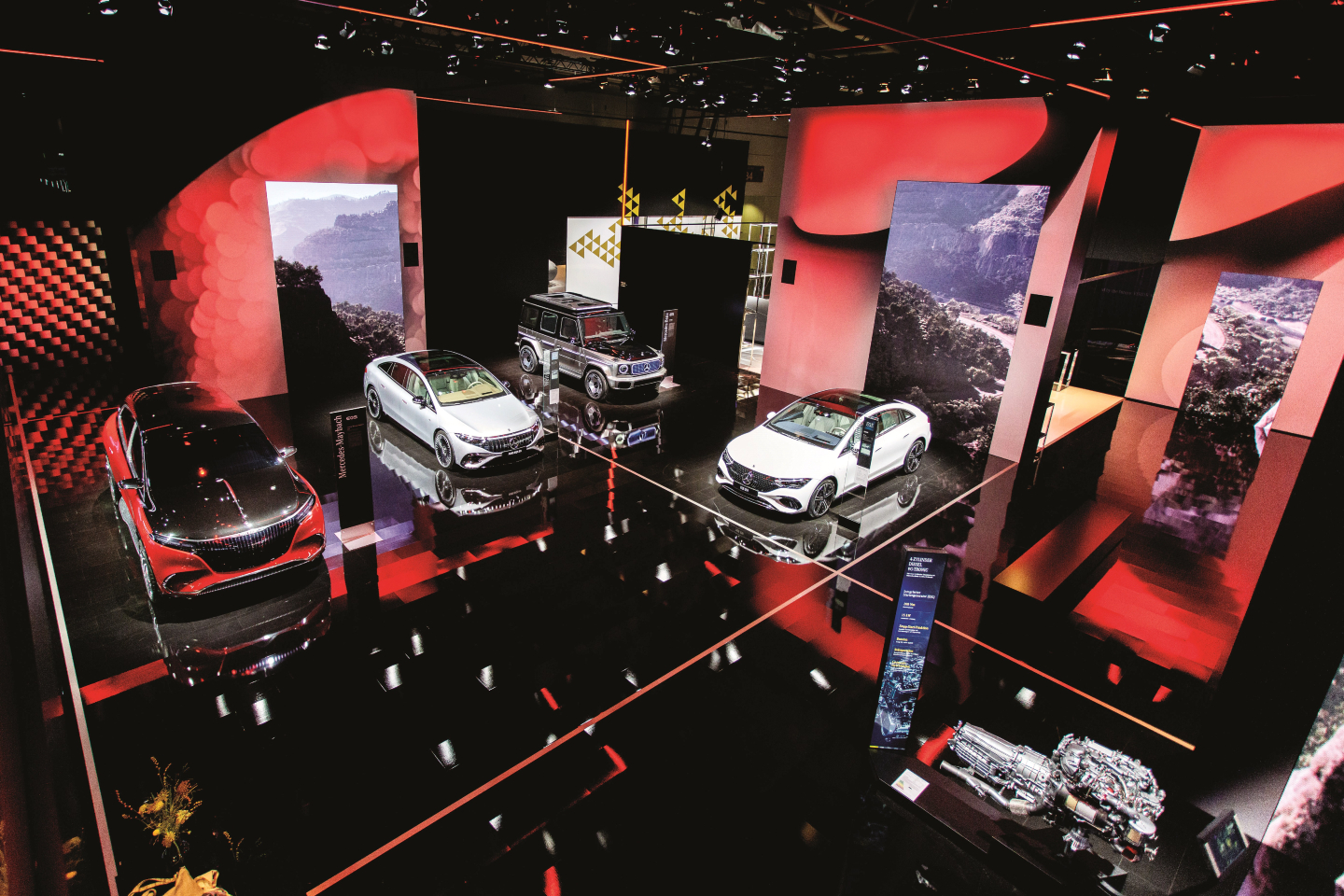
A diverse array of themed experiences was organised both at Munich’s gorgeous city centre and at the exhibition centre (All photos: Mercedes-Benz)
As Malaysians who have been under lockdown for what seems like an eternity, reading about Mercedes-Benz’s presence at the Internationale Automobil-Ausstellung fills us with excitement. Focusing on creating an encounter rather than purely presenting vehicles, the star of Stuttgart pressed forward with its new dialogue-based and experiential brand presence at trade fairs, taking advantage of the opportunities offered by the new format of the IAA, held from Sept 7 to 12 this year in the German city of Munich after almost 70 years in Frankfurt.
A diverse array of themed experiences was organised both at Munich’s gorgeous city centre and at the exhibition centre, anchored on the carmaker’s transition to a zero emissions, sustainable and digital future. At the Open Space experience, at the centrally located and beautiful Odeonplatz square, the focus was on the marque’s sustainable business strategy and went beyond purely automotive topics, combining the presentation of all current and future electric vehicles with an exhibition on sustainability topics, a work of art and a musical stage in the evening.
Central to the Open Space is Earthtime 1.26 Munich, a sculpture by American artist Janet Echelman — a 24m x 21m work of art that symbolises the dynamics of our ecosystem. The sculpture is made of recyclable high-tech fibres woven like a fishing net, whose colour and shape are continually transformed by changes in the wind, rain and light. Access to Open Space was free, and the artwork will grace Odeonplatz until the beginning of October.
earthtime_1.26_munich_installationw.jpg
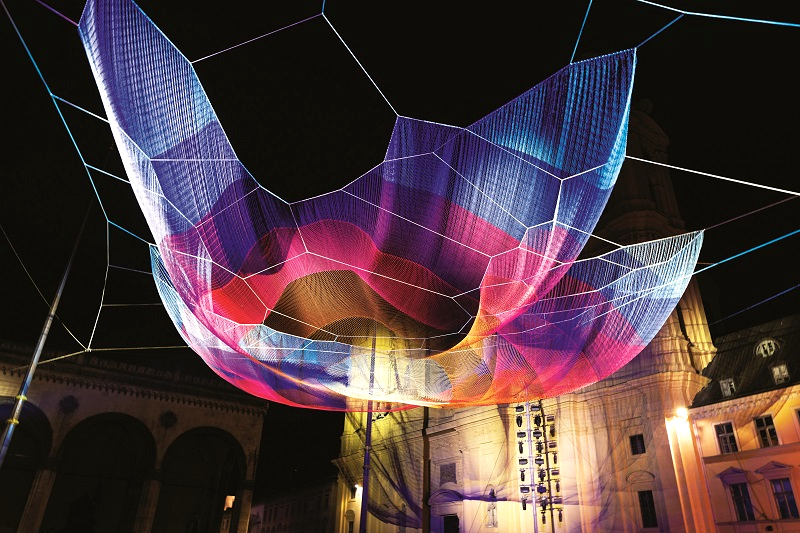
Over at the exhibition hall, things were a bit more serious. Themed areas with diverse opportunities for dialogue showcased Mercedes-Benz’s holistic approach to driving digitalisation forward, with the marque’s new releases commanding pride of place — out of the 10, seven were all-electric. There were opportunities for visitors to test drive a selection of Mercedes-Benz cars at the Blue Lane, and those who did not care for it could enjoy demonstrations of automated driving technology as well as other technological advancements in the industry. There had not been an auto show in Europe since 2019, so one can only imagine the heightened excitement of everyone present.
That said, the last IAA was not a very good one, owing to poor visitor numbers, environmental protests and no-shows by some major exhibitors. This resulted in a number of key changes, starting with its location — it is hardly debatable that Munich is a far more picturesque city than Frankfurt, and also allows for a clean start for the fair as it repositions itself. Second, the show was now less about cars and more about mobility in general, expanding its reach to include electric vehicles, scooters and even bicycles. This being the first fair since the start of the pandemic, there were multiple safety protocols in place too — daily visitors were capped at 80,000 and attendees had to show proof of vaccination, recovery or a recent negative result to enter.
One of two throwbacks from IAA 2019 that made an appearance this year was the non-participation of certain brands, chief among which were those from the Stellantis Group, which owns Alfa Romeo, Citroen and Chrysler. Second was the presence of climate campaigners, who staged protests on some of the busiest days of the fair. They do have the law on their side, though, as recent landmark rulings have forced German Chancellor Angela Merkel’s government to commit to faster CO₂ reductions. She has been endowed with the less-than-desirable sobriquet of “car chancellor” for her efforts in the past to shield German carmakers from tougher EU pollution rules, but is now seen to be leaving a more positive legacy in this regard.
2021-09-07t152149z_1414509047_rc23lp9a8vmv_rtrmadp_3_autoshow-munich.jpg
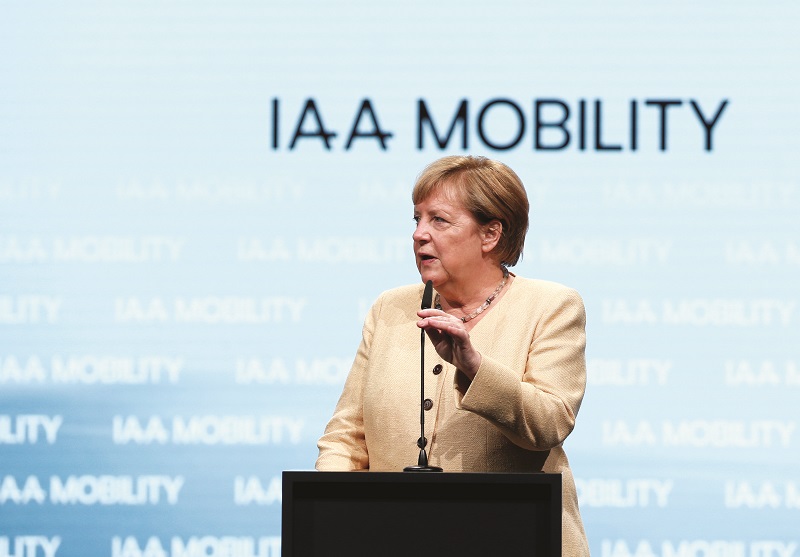
“The auto industry is not just part of the climate problem, but above everything else, a central part of the solution,” Merkel said at the opening of the event, her last speech as chancellor before she steps down later this month. She is convinced the transition to a climate-neutral economy by 2045 would be “a success” and touted her government’s steps to support that by subsidising electric vehicles and developing charging infrastructure.
Indeed, an all-electric future was the overriding theme at the fair, with Mercedes-Benz having thrown down the gauntlet for this early on with seven of its 10 new releases operating on non-petrol drivetrains. This did not come as a surprise even if the details of the cars did, as the marque indicated as far back as 2017 that it was working toward electrifying its entire line-up by 2022. Earlier this July, it said that by next year, it would offer battery-electric vehicles in every segment that it serves.
The marque’s plan to establish three electric-only architectures by 2025 that will form the basis of all its new vehicles is just genius as it provides a reference point for what is to come. The MB.EA platform will be used for its medium to large passenger cars, while the AMG.EA will underpin its performance Mercedes-AMG cars and the VAN.EA will be dedicated architecture for electric passenger minivans and light commercial vehicles. The MMA, the compact car architecture, had been unveiled and vehicles will be launched earlier, in 2024.
What Mercedes-Benz is doing, however, is quite specific — it is creating an all-electric platform that sits at the junction of sustainability and luxury. The brand has always been aspirational, and going from combustion engines to electric ones does nothing to change that. But luxury doesn’t just mean comfortable leather seats, premium materials and plush carpeting — it is also about serving the needs of the customer in unexpected ways.
britta_seeger.jpg
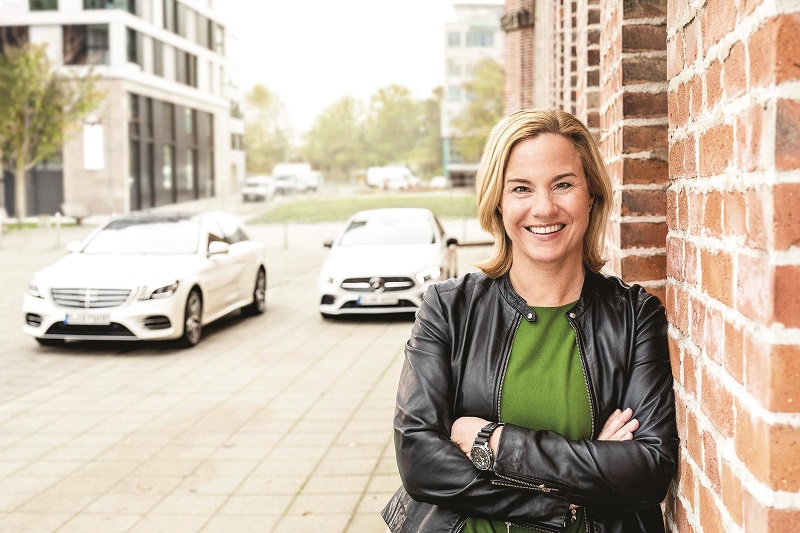
“For us as a luxury brand, the most important point in order to continue meeting the expectations of our customers is state-of-the-art products, seamless interaction and a digital interface that makes their lives easier. This is what we are doing now through MBUX, and it defines our approach for the future as well,” says Britta Seeger, board member of Daimler AG and Mercedez-Benz AG, responsible for marketing and sales.
A good example of this are over-the-air (OTA) updates, which was introduced earlier this year. Owners are notified by a message shown in the central display, and using mobile radio technology and the communication module installed in the vehicle, secure updates are downloaded and automatically installed. What previously required the insertion of a data medium such as a DVD, or a workshop visit, now takes place automatically over the air every three months, assuming the customer has activated this service in the Mercedes me Portal. A further option for an updated and improved user experience is the additional booking of new functions in the Mercedes me Store such as Smartphone Integration like CarPlay or Android Auto, In-Car Office or the digital radio DAB+ for optimum radio reception.
“We remind you that the car is ready for a service, for example, and with one click, the appointment is made with the workshop directly,” Seeger adds. “All these things are necessary for a luxury automotive brand and this is where our attention to the customer interface is going to be. The OTA updates are not to be underestimated because with this, one thing is very clear — the offering of additional services, which you can even buy after you have purchased your car. This will be more important in the future as you can get services that may not be available at the time you buy the car.”
2021-09-06_image_21c0543-110_1.jpg
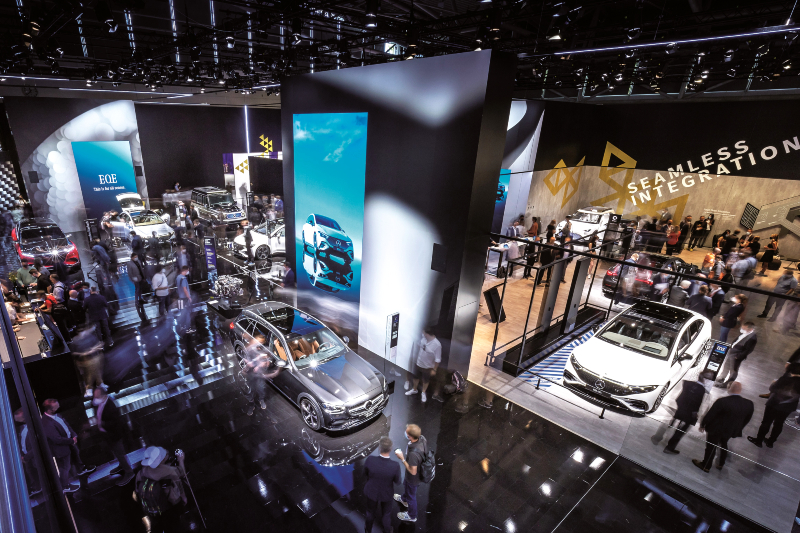
Mid-pandemic, as manufacturers had to deal with gaps in the supply chain like computer chips and semiconductors, Mercedes-Benz took the opportunity to establish a holistic approach to climate protection by putting in place measures to ensure that the entire automotive value chain would be CO₂-neutral by 2039. Tying in very well with this year’s emphasis on electric mobility at the IAA, Ambition 2039 covers technical development to the extraction of raw materials, to production, service life and recycling. This is a hugely important consideration, seeing that future trends indicate a growth in vehicle ownership, and not the reduction that was initially predicted.
“The biggest shift we have seen in customer needs and behaviour, in contrast to pre-pandemic times, is how they use their car. We forecasted a stronger growth in shared mobility before, but what we have seen in the last 20 months is a renaissance of owning a car again,” says Seeger. “We foresee a shift in driving your own car — leased or personally financed — not just because the pandemic has raised safety concerns, but also [brought about] a change in personal lives and habits. In Germany, for example, we will not go back to 100% being in the office and this will have an impact on mobility. There is a strong push for sustainable mobility and the desire to be safe in your own vehicle.”
Automotive enthusiasts have long avowed that petrol-powered engines will always provide a more superior driving experience than an electric vehicle possibly could, but the world is changing rapidly and if this year’s IAA is any indication of the future, combustion engines will one day be as rare as electric drivetrains are now. The idea of luxury in the automotive industry has also evolved — it is beautiful, it puts the customer’s needs first and it is, most importantly, kind to the planet.
This article first appeared on Sept 13, 2021 in The Edge Malaysia.


